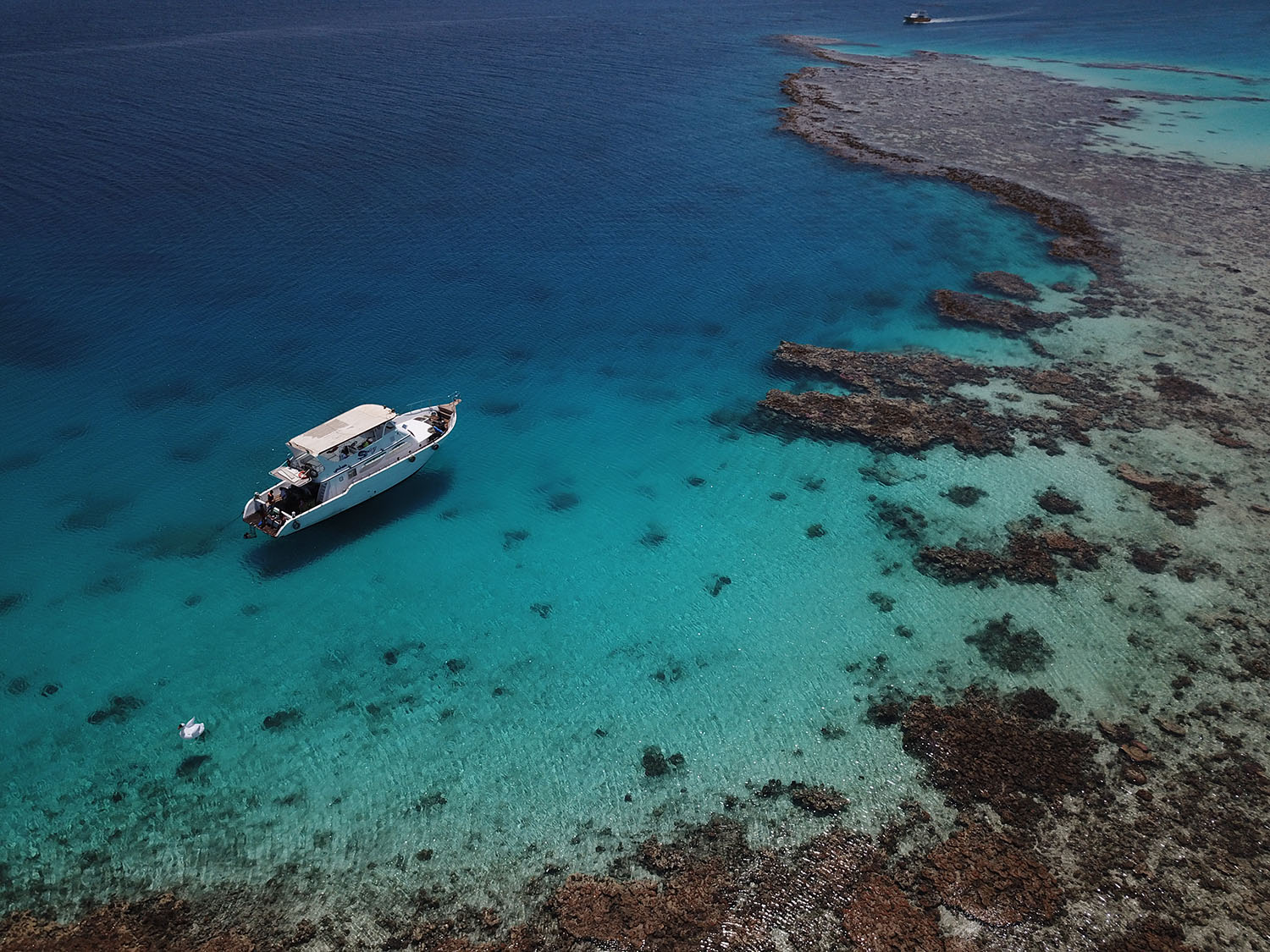Tourism Red Sea Egypt, Over the past decade, Egypt’s Red Sea coast has undergone one of the most remarkable transformations in global tourism. Once a collection of quiet fishing villages, the region has evolved into a world-class destination that attracts millions of visitors each year. With turquoise waters, pristine coral reefs, and a wealth of cultural heritage nearby, Egypt’s Red Sea Riviera — from Hurghada to Marsa Alam and Sharm El-Sheikh — now represents a perfect balance between relaxation, adventure, and sustainability.
But this transformation goes far beyond new hotels and sunny beaches. Modern infrastructure, eco-friendly initiatives, and community-centered tourism have reshaped how people experience Egypt’s coast. This long-form article explores the key developments driving this change — focusing on infrastructure, sustainability, and local community benefits — to reveal how the Red Sea has become a model for responsible and innovative tourism in the Middle East.
1. A Decade of Transformation on the Red Sea
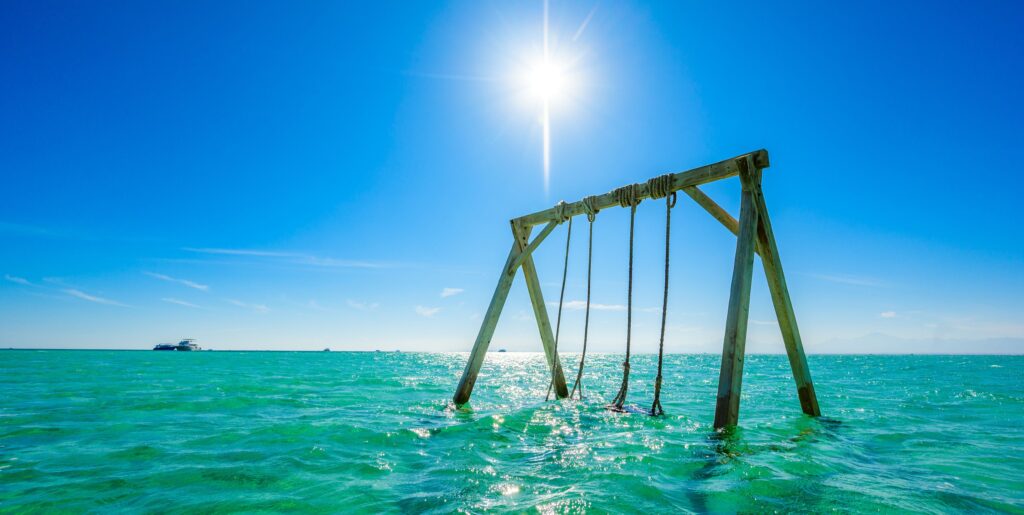
Just ten years ago, Egypt’s Red Sea tourism was centered mainly around beach holidays and diving. Hurghada was famous for its coral reefs and lively resorts, Sharm El-Sheikh drew divers from around the world, and Marsa Alam was a hidden gem for those seeking tranquility.
Since then, Egypt has invested heavily in transforming these destinations into full-scale tourism hubs. Today, the Red Sea coast welcomes visitors not only for water sports and sunshine but also for cultural excursions, eco-tourism, wellness experiences, and luxury travel.
What was once a region focused on mass tourism has now diversified into a destination that values sustainability, community growth, and year-round appeal.
2. Building the Future: Infrastructure Development
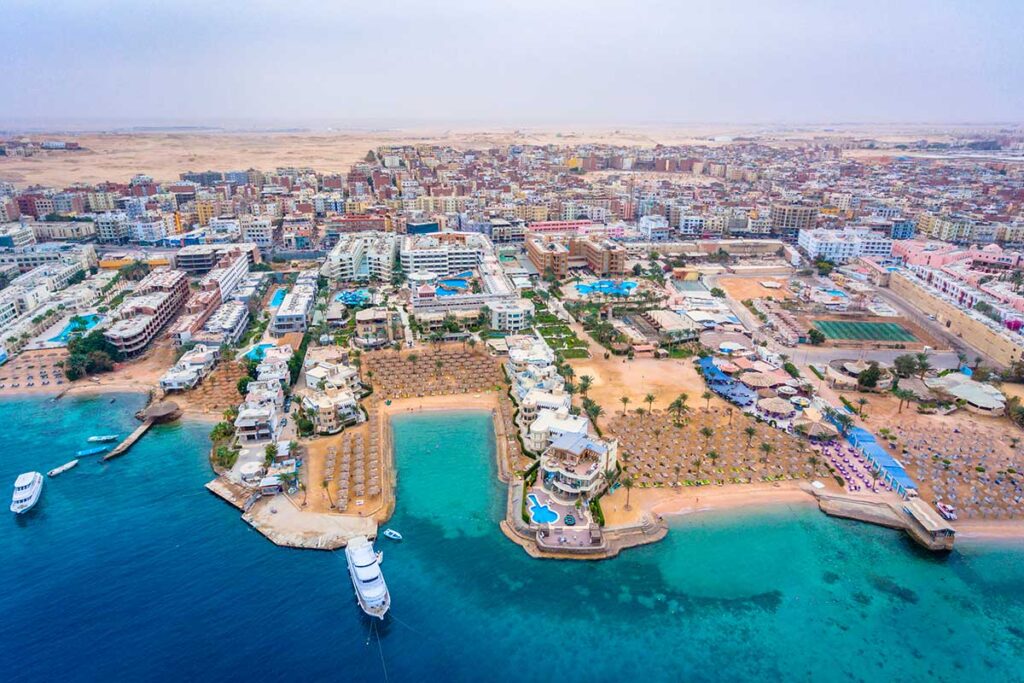
Modern Airports and Improved Connectivity
One of the most visible changes along the Red Sea coast is the modernization of transport infrastructure. Hurghada International Airport and Sharm El-Sheikh International Airport have both been expanded to handle millions of passengers annually. New direct flights from Europe, Asia, and the Gulf have made Egypt’s resorts more accessible than ever.
Marsa Alam International Airport has also played a crucial role in opening up the southern Red Sea region. Previously accessible only by long road journeys, this area is now connected to global travelers in just a few hours.
Expanding Roads and Highways
Modern highways now link Hurghada, Safaga, El Quseir, and Marsa Alam along the coast, while new roads connect inland routes to Luxor and Cairo. These road improvements make it easier for travelers to combine beach relaxation with cultural sightseeing — such as day trips from Hurghada to Luxor or from Sharm El-Sheikh to Mount Sinai.
Upgraded Resorts and Urban Planning
Hurghada and El Gouna have become models of organized urban development. Resorts now feature smart infrastructure — energy-efficient systems, reliable water treatment, and advanced waste management. Public promenades, marinas, and new shopping districts have turned former resort zones into lively urban centers that appeal to both tourists and residents.
El Gouna, often referred to as “Egypt’s Green Town,” stands out as a pioneering example of sustainable planning, powered by renewable energy and built with environmental harmony in mind.
3. Sustainability: Protecting the Red Sea for Future Generations
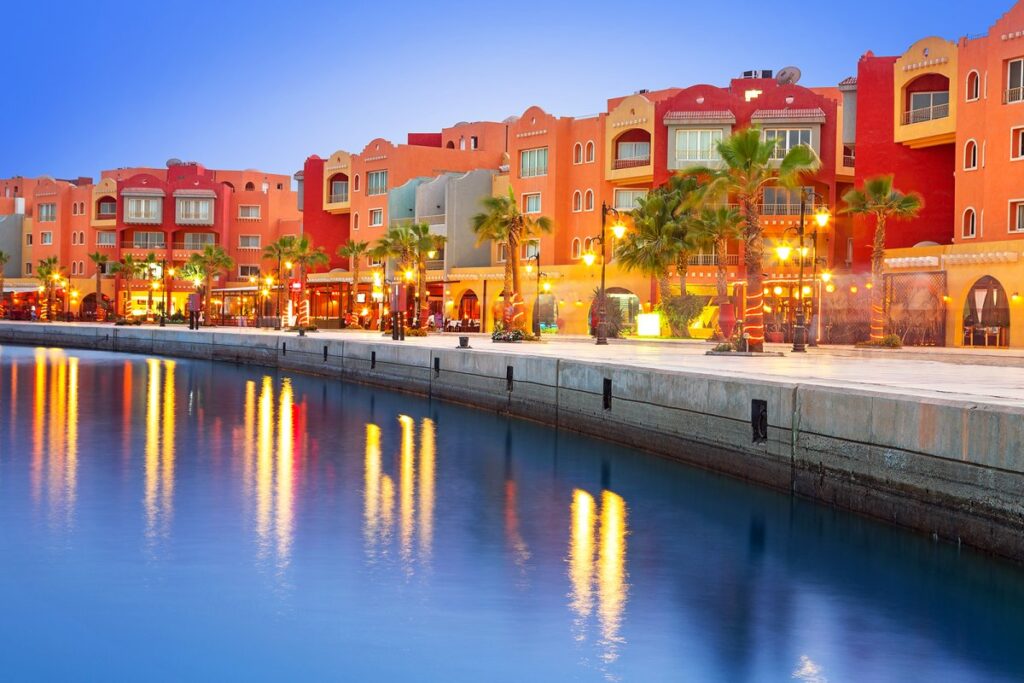
Egypt’s Red Sea is one of the most biodiverse marine ecosystems in the world. Home to over 200 species of coral and thousands of fish species, it’s a paradise for divers and snorkelers. However, rapid tourism growth also brought challenges — pollution, coral damage, and overdevelopment.
In recent years, Egypt has launched an ambitious plan to protect its natural heritage while promoting sustainable tourism practices.
Marine Protection and Eco-Diving
Organizations like the Hurghada Environmental Protection and Conservation Association (HEPCA) have introduced strict regulations for diving centers and boat operators. Mooring buoys now prevent anchors from damaging coral reefs, and educational programs train divers and tourists to interact responsibly with marine life.
Many diving centers along the coast now hold eco-certifications, offering reef-friendly trips that support conservation. The result: improved coral health and thriving underwater ecosystems.
Solar Energy and Eco-Resorts
With over 3,000 hours of sunshine annually, Egypt’s Red Sea coast is ideal for solar energy. Many hotels and resorts have installed solar panels to power water heating, air conditioning, and lighting. Some eco-lodges in Marsa Alam — such as Marsa Shagra and Wadi Lahami — run almost entirely on renewable energy and follow “zero waste” principles.
In these eco-resorts, guests can enjoy sustainable comfort: fresh local meals, minimal plastic use, and direct access to unspoiled reefs without harming the environment.
Reducing Plastic Waste
Single-use plastics were once a major issue in the region. Today, many tour operators and hotels have banned plastic bottles, bags, and straws, replacing them with biodegradable alternatives. Beach clean-up events, led by both locals and tourists, have become common — reflecting a growing environmental awareness along the Red Sea.
4. Empowering Local Communities
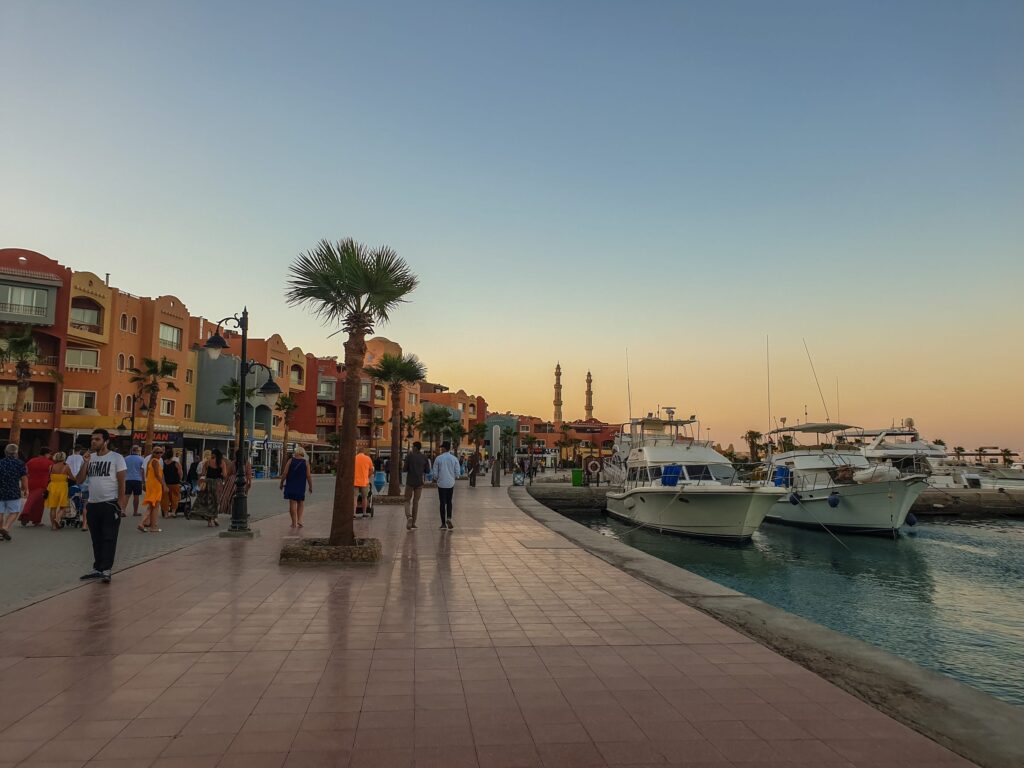
Tourism on Egypt’s Red Sea coast has not only boosted the national economy but also brought significant benefits to local communities. In the past, most jobs were limited to resort staff, but today opportunities have expanded to include entrepreneurship, education, and cultural preservation.
Job Creation and Skills Development
The growth of tourism has created thousands of jobs in hospitality, diving, transportation, and tour operations. Training centers in Hurghada and Sharm El-Sheikh now offer specialized courses in languages, hotel management, and marine conservation, empowering young Egyptians to build long-term careers in tourism.
Supporting Local Businesses
Markets in Hurghada, Safaga, and El Quseir have flourished thanks to tourism. Visitors can buy handmade jewelry, natural oils, and locally produced textiles. Many tour companies now include stops at local workshops, giving travelers a chance to support artisans directly.
Bedouin communities in the surrounding deserts also benefit from safari excursions, camel tours, and traditional dinner experiences — all designed to share authentic culture while providing sustainable income.
Women in Tourism
In recent years, Egypt has made notable progress in supporting women in the tourism workforce. Women now run guesthouses, guide cultural tours, and manage small travel businesses, especially in eco-tourism and community projects. This shift not only strengthens the local economy but also promotes social inclusivity.
5. Diversification: From Mass Tourism to Meaningful Travel
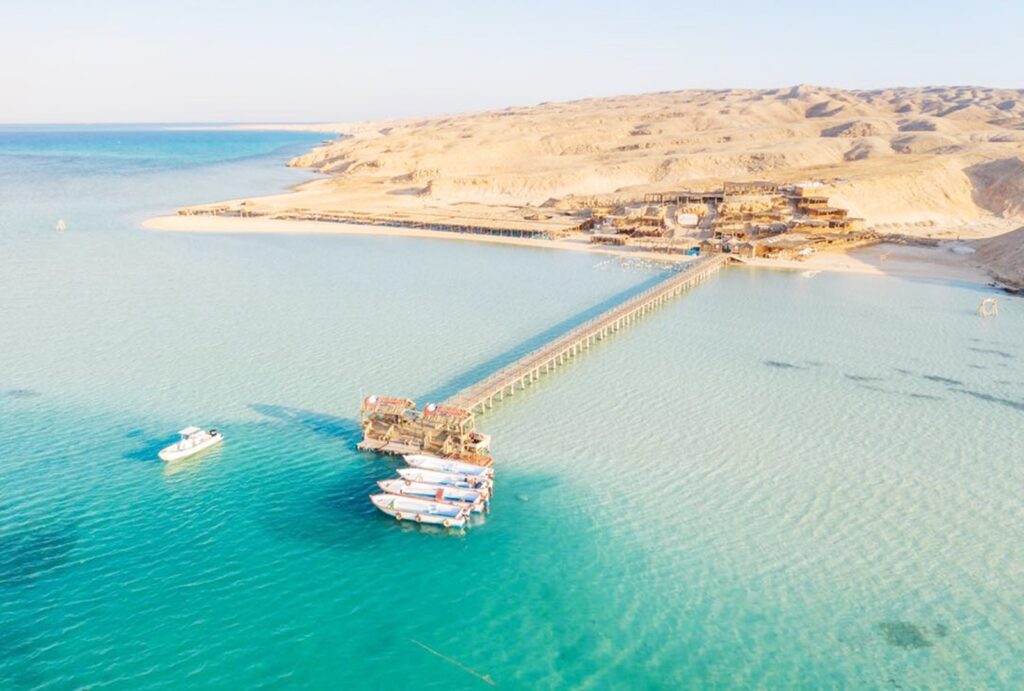
The Red Sea coast has successfully moved beyond “all-inclusive” tourism to offer more specialized, experience-based travel options.
Adventure and Sports Tourism
The region is a playground for adventure lovers. Quad safaris, desert hiking, kite surfing, and windsurfing attract active travelers year-round. Hurghada, El Gouna, and Soma Bay are now recognized internationally for their wind sports facilities.
Diving remains one of the most iconic activities, with world-renowned sites like Giftun Island, Elphinstone Reef, and Thistlegorm Wreck. Improved regulation ensures safe diving while preserving delicate ecosystems.
Cultural and Heritage Excursions
Beyond the beach, travelers can now explore Egypt’s rich heritage through day trips to Luxor, Aswan, or Cairo. Many resorts organize combination tours that let guests experience both the Red Sea and ancient Egypt — blending relaxation with discovery.
Wellness and Luxury Tourism
Luxury tourism has also seen massive growth. High-end resorts offer private villas, spa treatments, and wellness retreats that combine Egyptian hospitality with modern comfort. Yoga retreats, detox programs, and thalassotherapy treatments make the Red Sea a rising wellness destination.
6. The Role of Technology in Red Sea Tourism
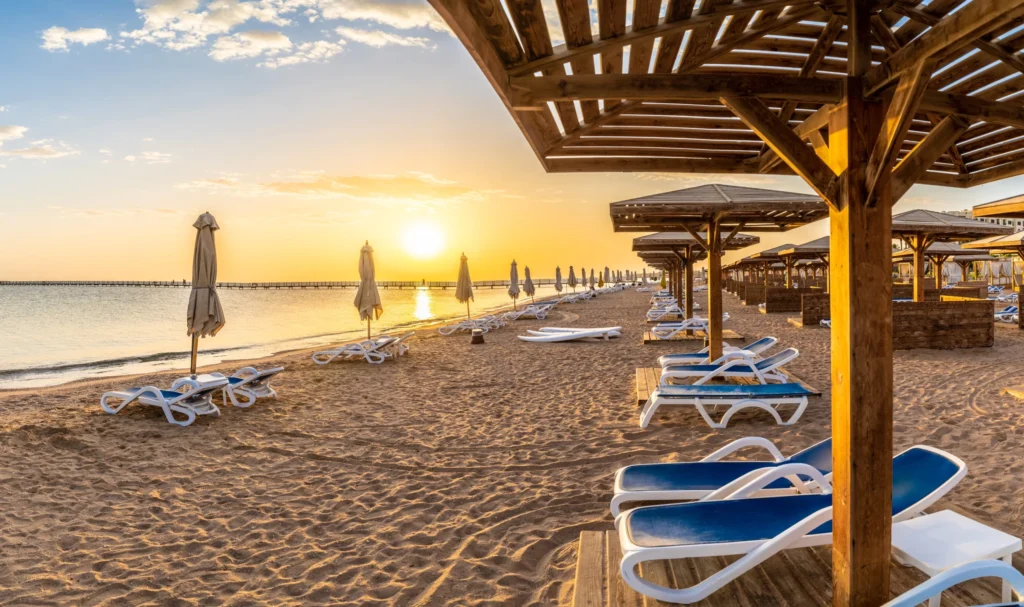
Digital transformation has been another key factor in the region’s tourism evolution.
Online Booking and Smart Tourism
Most hotels, dive centers, and tour companies now offer digital booking platforms and mobile payment options, simplifying travel planning. Travelers can customize their trips online, selecting eco-certified tours, sustainable accommodations, or private experiences.
Social Media and Global Visibility
Platforms like Instagram, TikTok, and YouTube have played a major role in showcasing the beauty of Egypt’s Red Sea coast. Influencers and travelers share breathtaking underwater photos, sunset cruises, and desert adventures, inspiring millions to visit.
As a result, Hurghada and Sharm El-Sheikh have become two of the most photographed destinations in the Middle East.
Smart Sustainability Tracking
Some hotels have adopted smart systems that monitor energy use and water consumption, providing guests with transparency on sustainability practices. These innovations not only build trust but also encourage other businesses to adopt eco-friendly models.
7. Challenges and Future Vision
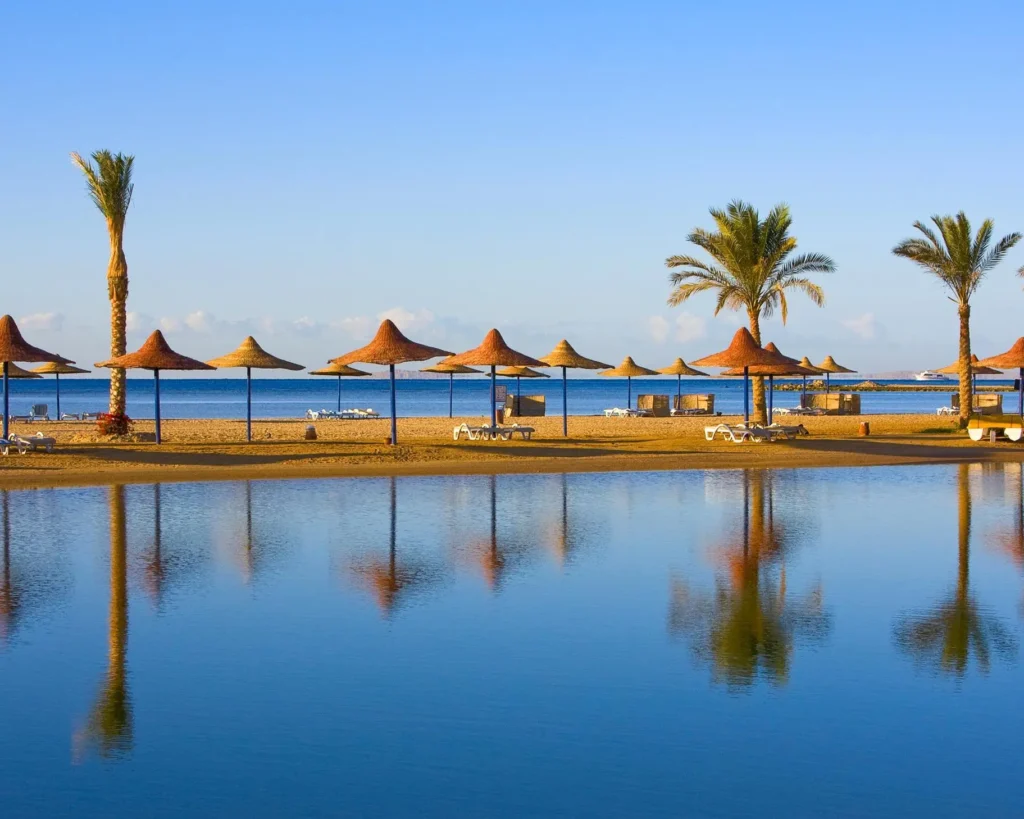
While Egypt’s Red Sea tourism has achieved tremendous success, it still faces challenges. Climate change, coral bleaching, and overdevelopment in certain areas pose risks to the ecosystem.
To counter these issues, the Egyptian government has launched several long-term strategies.
Egypt Vision 2030
Under the Egypt Vision 2030 plan, sustainable tourism is a national priority. The government aims to balance economic growth with environmental protection, encouraging eco-friendly construction, clean energy, and responsible tour operations.
Marine Research and Climate Initiatives
New marine research stations along the Red Sea are studying coral resilience and developing reef restoration programs. Egypt also collaborates with international organizations to monitor marine health and promote low-carbon tourism.
Training and Awareness
The tourism sector is investing in staff education — from eco-diving instructors to hotel sustainability managers — ensuring that responsible tourism becomes the norm, not the exception.
8. What This Transformation Means for Travelers
For visitors, the transformation of Egypt’s Red Sea coast translates into richer, more responsible travel experiences.
- Families can enjoy safe, clean beaches and world-class resorts with environmental certifications.
- Divers have access to protected reefs with professional guides and modern facilities.
- Adventure seekers can explore deserts, mountains, and islands with minimal environmental impact.
- Eco-conscious travelers can choose solar-powered lodges and plastic-free hotels.
- Culture enthusiasts can connect with local communities through authentic, small-scale excursions.
The result is a travel experience that’s not only unforgettable but also meaningful — where every tourist becomes part of Egypt’s ongoing story of preservation and progress.
9. The Future of Egypt’s Red Sea Tourism
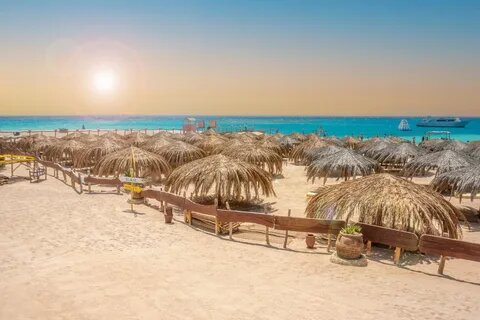
The next decade is expected to bring even more innovation. Plans include electric vehicle transport between resort zones, artificial reef restoration projects, and expanded cultural tourism linking coastal areas with inland heritage sites.
With its blend of modern infrastructure, environmental awareness, and warm hospitality, the Red Sea coast is on track to become one of the world’s leading examples of sustainable coastal tourism.
10. Conclusion: A New Era for the Red Sea
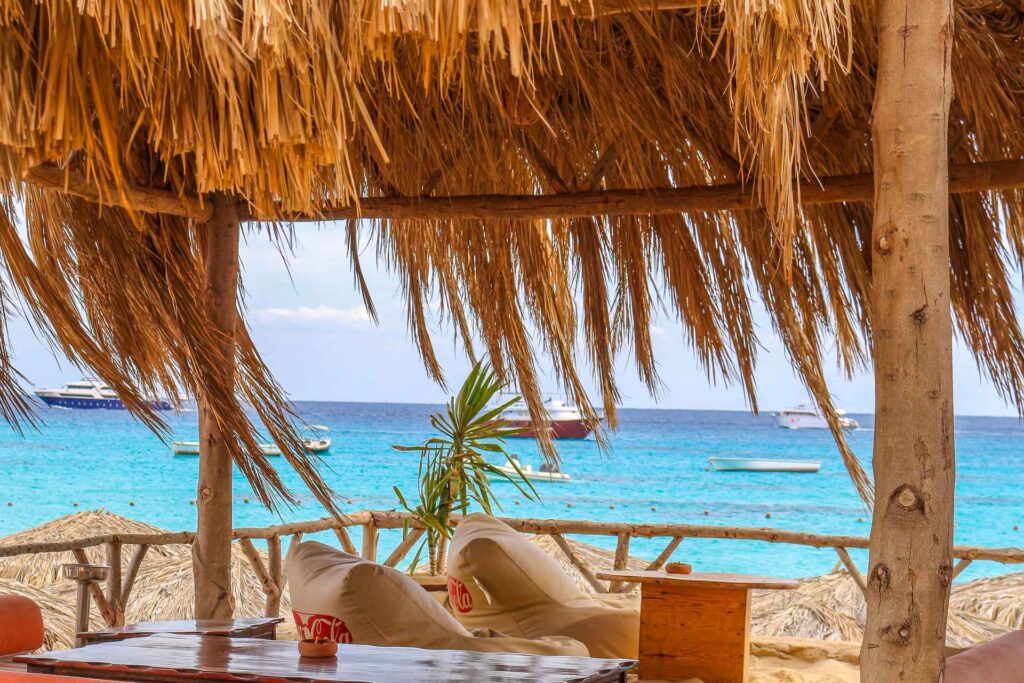
Egypt’s Red Sea coast is no longer just a sun-and-sea destination — it’s a living example of how tourism can transform a region for the better. Through careful planning, investment, and respect for nature, Egypt has managed to build a destination that honors both its environment and its people.
Whether you’re diving among coral gardens, sailing toward desert islands, or dining in a solar-powered resort, every experience along the Red Sea tells a story of renewal and vision.
Tourism here is not just growing — it’s evolving. The Red Sea coast of Egypt is proof that with the right balance of infrastructure, sustainability, and community engagement, a destination can thrive while protecting the beauty that makes it special.

